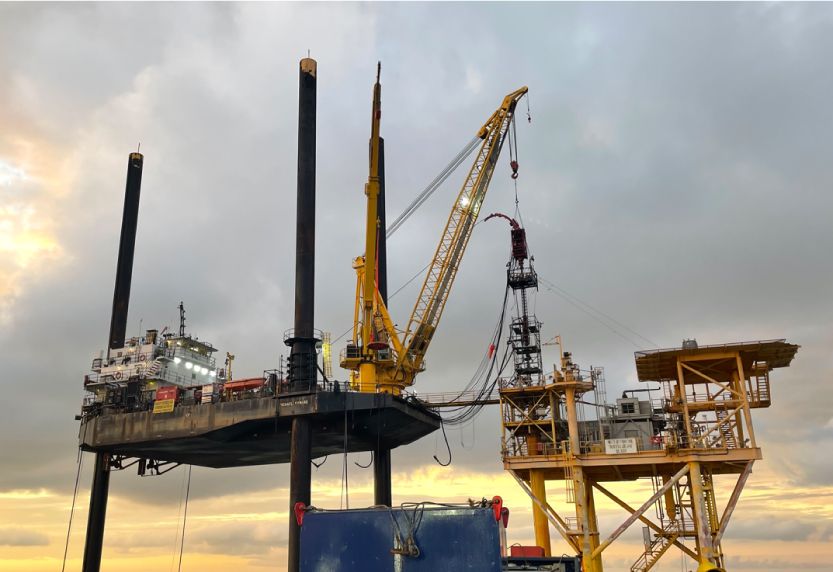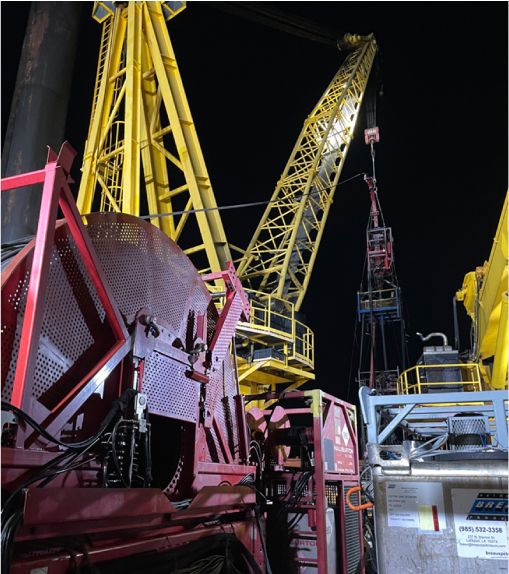Well integrity is crucial to the safety and success of plug and abandonment (P&A) operations, including well decommissioning. P&A operations involve the installation of barriers to seal the wellbore and prevent migration and leakage of formation fluids in perpetuity. Well barrier failure during the decommissioning process could lead to environmental damage, harm to local communities, and significant legal and financial consequences for the operator. The purpose of this article is to describe the importance of well integrity in offshore P&A operations and how to assure well integrity through testing and verification of complete barrier systems.
Understanding Plug & Abandonment
Objective of P&A Operations
Operators plug and abandon a well when it is no longer profitable to produce or useful, as with an injection well. The primary objective of the P&A process is to ensure the well’s integrity by creating a permanent barrier system that isolates the wellbore from the formation and prevents fluid migration into groundwater zones or to the surface.
Plug & Abandonment Process
The P&A process begins with assessing the history and condition of the existing well barrier elements and developing a plan to install and verify additional barriers that are required. The operator confirms that the plan meets regulatory requirements and industry guidelines and selects a P&A service provider to perform the P&A operations. Once on site, the service provider removes any wellbore debris or obstructions from the wellbore before logging the well to assess its condition and identify any potential subsurface leaks or hazards.
The service provider places cement and mechanical barriers, such as bridge plugs and cement retainers, at predetermined intervals to isolate zones and prevent fluid migration from the formation. A common well abandonment technique is to place cement plugs on top of mechanical plugs. Cement barriers also provide structural support for the casing, prevent corrosion, and structurally reinforce the wellbore. Cement plugs are used in open hole applications and across liner tops. Physical depth tagging may be performed to confirm plug location.
Next, the service provider verifies the integrity of the barriers using pressure testing and cement bond logging. The contractor may also use diagnostic tools, such as temperature surveys and noise logging, to detect any potential channels or leaks in the cement barriers. After verifying barrier integrity, the contractor cuts and removes the wellhead and any remaining wellbore components, such as production tubing and casing, in accordance with company policy and local regulations. The contractor also retrieves any equipment from the seabed, such as production trees and control systems, and clears the site. Finally, the service provider compiles all documentation of P&A activities into a report for handover to the operator.
The Importance of Well Integrity in Plug & Abandonment
Well integrity is critical to P&A operations regarding regulatory compliance, safety, and environmental considerations. Operators must adhere to regulatory requirements and industry standards to ensure well integrity, and they must use responsible practices to mitigate potential hazards that threaten health, safety and the environment.
Regulatory Compliance
All regulatory agencies require integrity testing of well barrier components. For example, in the United States, the Bureau of Safety and Environmental Enforcement (BSEE) and the Environmental Protection Agency (EPA) provide regulations and guidelines for P&A operations. In the Norwegian petroleum industry, the NORSOK D-010 standard defines the minimal functional requirements for well design, planning and execution with the aim of maintaining well integrity throughout the life cycle of the well. In the UK, the North Sea Transition Authority (NSTA) and Health and Safety Executive (HSE) regulate these activities.
Meeting regulatory requirements and obtaining the necessary permits for P&A activities can be challenging, as regulations may differ across jurisdictions and evolve over time. Operators must obtain necessary permits and engage with regulatory authorities throughout the P&A process. This will ensure compliance, reduce risks, and manage changes to approved programs that may be necessary during operations.
Safety & Environmental Considerations
Plugged and abandoned wells with compromised well integrity can expose the environment to a variety of air and water pollutants. The release of gases, volatile organic compounds (VOCs), or hazardous air pollutants can occur if proper controls are not implemented during and after P&A operations. The migration of formation fluids into groundwater, surface water bodies, or marine environments may impact water quality and disrupt terrestrial and marine ecosystems. Fluid migration across ineffective barriers may create future operational challenges by creating shallow gas or over-pressured zones at unexpected depths.
Well integrity ensures that the paths between different subsurface formations are sealed so that fluids and gases remain confined within their original formation zones. This prevents the risk of uncontrolled fluid migration that could contaminate soil, groundwater, surface water, or marine environments. A quality program and supporting integrity documentation can demonstrate the effective plug and abandonment of assets and may be useful in any investigation or troubleshooting later.
Best Practices to Ensure Well Integrity in Plug & Abandonment
The following is a summary of best practices for ensuring well integrity during and after P&A operations.
Planning
Planning P&A activities during the well design phase identifies cost-effective solutions based on well complexity and facilitates smoother execution with a pre-defined plan for abandonment. Early planning also enables knowledge transfer and the handover of critical documentation.
Well Preparation
Assess the condition of the well and thoroughly clean the wellbore to remove any obstructions that can interfere with the cement bond integrity and other plugging operations.
Regulatory Compliance
Adhere to applicable regulations and guidelines, obtain necessary permits, and engage with regulatory authorities throughout the P&A process to ensure compliance and reduce risks.
Well Abandonment Design
Developing well abandonment plans that consider the specific characteristics of the well, reservoir, and surrounding formations is crucial for selecting appropriate techniques and materials to achieve long-term well integrity.
Multiple Barrier Systems
Additional mechanical barriers, such as bridge plugs or cement squeeze operations, may be installed above or below the primary cement barrier to enhance well integrity. All plug depths should be set for the purpose of isolating a zone or protecting a zone based on well conditions and geometry.
Quality Assurance & Verification
Implement rigorous quality control measures, including cement bond logs and pressure testing to independently test and verify barrier integrity (described in the following section).
Documentation
Compile reports of all activities, including well logs, pressure test results, cement bond logs, and other relevant data.
Monitoring & Surveillance
Regularly monitor and observe abandoned wells to detect any signs of potential leakage or integrity failure to enable timely remediation actions.
Barrier Testing & Verification
Importance of Verifying Well Barrier Integrity in P&A Operations
The consequences of a barrier integrity failure are considerable, impacting public health, safety, and the environment, and it can lead to legal and financial penalties and damage to reputation. The integrity of a barrier is not assured until it has been tested and verified using the technologies described below.
Technologies for Verifying Well Barrier Integrity in P&A Operations
Well integrity is not established by individual barrier components but on the collective performance of all components in the wellbore. The operator may use data collected during well construction or run a new cement bond log using a sonic tool that measures the bond quality of the cement to the casing and to the formation. This provides insights into channels or voids in the cement sheath that can act as potential pathways for fluid migration. This information is vital in targeting specific zones for placement of cement plugs and mechanical barriers. A common abandonment technique is to place a cement plug on top of a mechanical plug at multiple zones in the wellbore. Cement plugs are also used in open hole applications and across liner tops.
All local regulations require cement barriers to extend across the full cross section of the wellbore. The best methods to validate a cement plug placement are the drill pipe weight test and pressure testing. The main advantage of the drill pipe weight test is that it is used to tag the top of the cement in wells with high angles or poor hole conditions to confirm that the plug is at the required depth. However, the weight test is less stringent than pressure testing when measuring the cement plug seal effectiveness.
Pressure testing is the most effective method of barrier verification. It is used to verify the integrity and effectiveness of the collective barrier system based on specific criteria specified by the operator. Pressure testing is also typically performed on a cement plug set above a plug that was tagged. A predetermined pressure is applied that exceeds the anticipated pressure differentials that the barriers are expected to encounter. Positive or negative (inflow) tests are used based on the direction of expected flow. The pressure is analyzed for a specific duration against the operator’s criteria to objectively determine if the barrier system passes or fails.
IPT provides a comprehensive digital solution for planning, testing, and reporting integrity tests on well barrier systems during P&A operations. Digital pressure testing allows more efficient and accurate integrity assurance because it uses objective criteria to determine whether a pressure test passes or fails.
Competence in Integrity Monitoring and Inspection of P&A Wells
Qualified professionals should be engaged to carry out monitoring and inspections to properly assess the condition of P&A wells. These professionals should have experience in well integrity management, regulatory requirements, and be able to interpret inspection results accurately.
IPT’s team of subject matter experts provides barrier integrity verification, tracking, and consultation services to support your well integrity program.
IPT Assures Well Integrity During Plug & Abandonment
The specific steps and techniques to maintain well integrity vary but the means to assure the integrity of the well are constant. IPT’s products and services test and verify the integrity of the entire well barrier system during all phases in the life cycle of a well including plug and abandonment. Contact us to learn more about how IPT’s products and services can ensure the success of your P&A operations.







